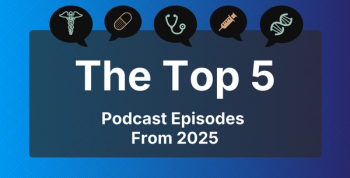
Study: Inconsistency of Rare Disease Definitions Causes Problems That Standardization Could Fix
Investigators say that inconsistencies in the way rare diseases are defined contribute to misdiagnoses, delayed treatment, and other ills that could be addressed with global standards.
There is an urgent need to improve classification of
The high incidence of common diseases in certain populations, regions, and contexts helps to corroborate disease definitions and support standard diagnostic capabilities and therapeutic approaches. However, “the probability of such corroboration for rare diseases is substantially lower,” the authors wrote.
There is not even agreement on how many people are affected by rare diseases. The US Orphan Drug Act of 1983 defines rare diseases as affecting fewer than 200,000 individuals worldwide, but European Union legislation passed in 2000 defines them as affecting fewer than 1 in 2000.
Further complicating the picture is that local incidence may determine whether a disease is rare. Examples of this are Tay-Sachs disease, which has a carrier frequency of 1 in 25 among Ashkenazi Jews; sickle cell disease among those of sub-Saharan African descent; and tuberculosis, which is rare in the United States but is 1 of the top 10 causes of death worldwide.
Terms used to define rare diseases can sometimes be inaccurate or imprecise. For example, “breast cancer” encompasses a variety of tumor subtypes with unique genetic signatures and different treatments, leaving it open to interpretation whether breast cancer should be considered 1 or multiple diseases.
The authors described a collaborative effort to harmonize disease definitions called Monarch Disease Ontology (Mondo), which estimates the number of specific rare diseases (not categories or parent terms) at more than 10,000. However, the authors said, “This preliminary analysis suggests that there could be a substantially higher number of rare diseases than typically assumed at present, with obvious implications for diagnostics, drug discovery and treatment.”
Regulators, scientists, clinicians, and patient advocacy groups peg the number of rare diseases at between 5000 and 8000. The article estimates about 10% of the world’s population is affected by a rare disease;
Rare disease classification systems may exclude chromosomal disorders, structural variations such as inversions, and diseases caused by environmental factors such as toxin exposure. “Ultimately, if knowledge on rare diseases is not collected and curated more effectively, many patients with rare diseases will remain underserved or neglected by healthcare systems,” the authors wrote.
Most common diseases are associated with numerous small-effect genetic variants, but various types of rare disease have their own characteristics. Providers may attempt to identify these rare diseases based on a patient's phenotypic features, but “even with the current limited knowledge of the genetic basis of many rare diseases, it is known that different pathogenic variants in the same gene may have different consequences, which is often not adequately recorded,” wrote the authors. Although some diseases involve variants in the same gene, they should be considered distinct diseases with different presentation and treatment, the authors note.
A significant clinical challenge is that most clinicians are unlikely to have experience diagnosing or monitoring rare diseases, which contributes to delayed or wrong diagnoses for patients. The authors stress that consensus on physical, genetic, and environmental characteristics of each condition is critical to solving these problems.
The authors call for funding and regulatory agencies, patient advocacy groups, and other organizations in the rare disease field to join forces globally to collect, consolidate, and curate the most current knowledge on rare diseases. Agencies the authors
They also suggest that a forum is needed to discuss these issues, with dedicated funding mechanisms to address them. The authors hope that globally consistent criteria for rare diseases will provide a foundation for more effective diagnosis and care of patients as well as the development of new therapeutic approaches.
Reference
Haendel M, Vasilevsky N, Unni D, et al. How many rare diseases are there? Nat Rev Drug Discov. 2019;19:77-78. doi: 10.1038/d41573-019-00180-y.
Newsletter
Stay ahead of policy, cost, and value—subscribe to AJMC for expert insights at the intersection of clinical care and health economics.








































